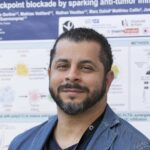Link to Pubmed [PMID] – 29670603
Link to DOI – 10.3389/fmicb.2018.00645
Front Microbiol 2018 ; 9(): 645
Some Gram-positive bacteria, including probiotic ones, are covered with an external proteinaceous layer called a surface-layer. Described as a paracrystalline layer and formed by the self-assembly of a surface-layer-protein (Slp), this optional structure is peculiar. The surface layer per se is conserved and encountered in many prokaryotes. However, the sequence of the corresponding Slp protein is highly variable among bacterial species, or even among strains of the same species. Other proteins, including surface layer associated proteins (SLAPs), and other non-covalently surface-bound proteins may also be extracted with this surface structure. They can be involved a various functions. In probiotic Gram-positives, they were shown by different authors and experimental approaches to play a role in key interactions with the host. Depending on the species, and sometime on the strain, they can be involved in stress tolerance, in survival within the host digestive tract, in adhesion to host cells or mucus, or in the modulation of intestinal inflammation. Future trends include the valorization of their properties in the formation of nanoparticles, coating and encapsulation, and in the development of new vaccines.
